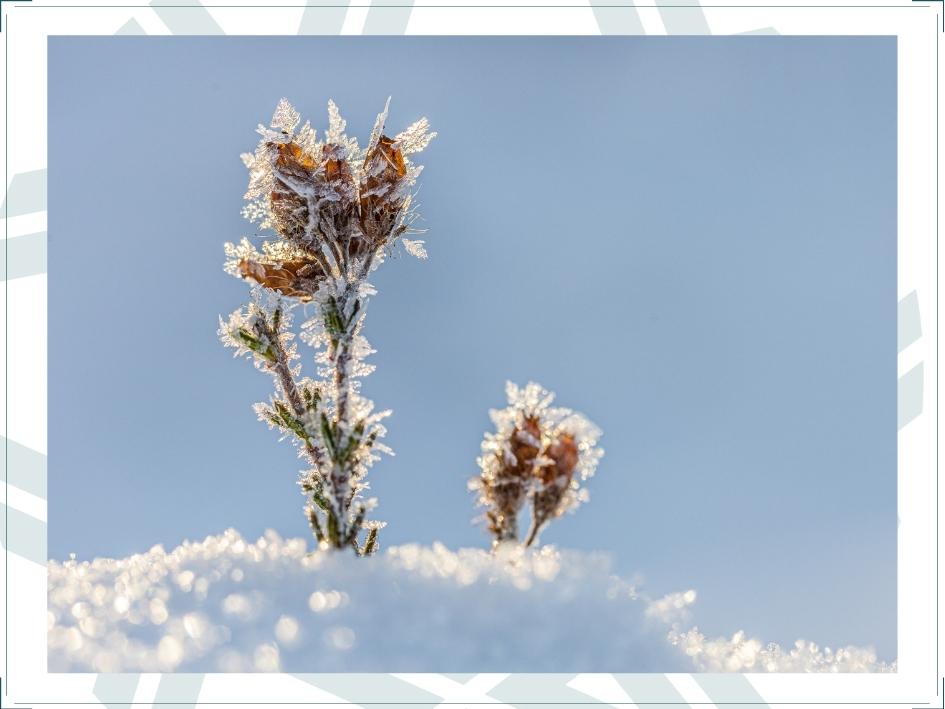Shooting in the winter
The winter period is a great season to photograph. Now that winter time is approaching, we have listed a number of tips. So that you are well prepared and can shoot such beautiful winter pictures yourself.
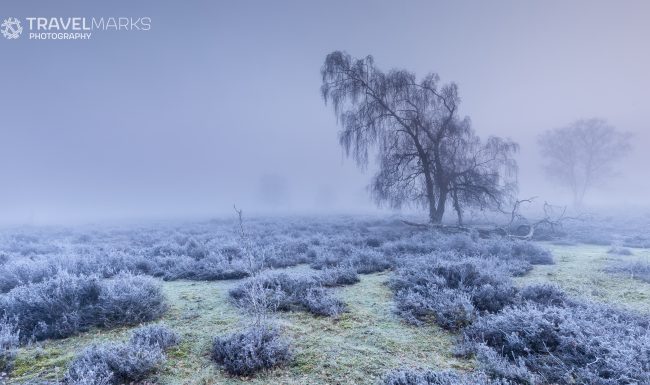
The blue and golden hour
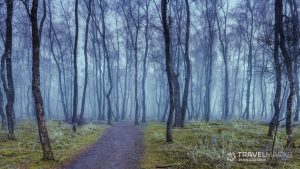 When photographing a winter landscape, good planning is very important. The best time for this is in the morning, around sunrise. Fortunately, the sun rises a little later in winter, so you don't have to get out of bed too early. It is important to be on location on time so that you can prepare everything properly and make optimal use of the so-called blue and golden hour. The blue hour is just before the golden hour in the morning, in the evening it is just the other way around. During the blue hour, the sky begins to take on more color as it transitions from night to day. At the beginning of that hour, at 'civil twilight', there is often still some fog, which even creates a fairytale atmosphere. The golden hour begins shortly after the blue hour.
When photographing a winter landscape, good planning is very important. The best time for this is in the morning, around sunrise. Fortunately, the sun rises a little later in winter, so you don't have to get out of bed too early. It is important to be on location on time so that you can prepare everything properly and make optimal use of the so-called blue and golden hour. The blue hour is just before the golden hour in the morning, in the evening it is just the other way around. During the blue hour, the sky begins to take on more color as it transitions from night to day. At the beginning of that hour, at 'civil twilight', there is often still some fog, which even creates a fairytale atmosphere. The golden hour begins shortly after the blue hour.
If you want to capture the many ice crystals, you have to be there in time. They are best visible at sunrise, when it has frozen at night. It is coldest when the sun rises. Soon after, everything is slowly warmed up by the sun, and the ice crystals will disappear.
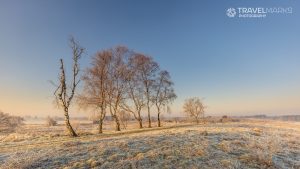 Choosing the composition
Choosing the composition
In addition to the right timing, choosing the location and composition is also important. It's good to know exactly where the sun rises and how you want to take your picture. During the sunrise you can shoot towards the sun for a colorful sky. When the sun is a bit higher, you can change position and photograph with the sun at your back. That way you get the soft and warm glow of the light in the photo.
Shoot with the right settings
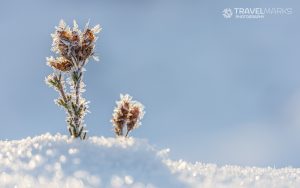
Now that you know where and when to shoot, it's time for how to do it. For landscape photography, a large depth of field is recommended. That is, for example, an aperture between F11 and F16. For lovers of nature and macro photography, a low aperture is used. This is between F2.8 and F5.6, so you get your subject sharp and the background a bit blurry, so that more depth is created.
Want to learn to photograph or gain experience?
Would you like to learn more about photography and your camera yourself? Or gain more experience in the outdoors with guidance? Then take a look at the many workshops and sign up.
Till clicks!


